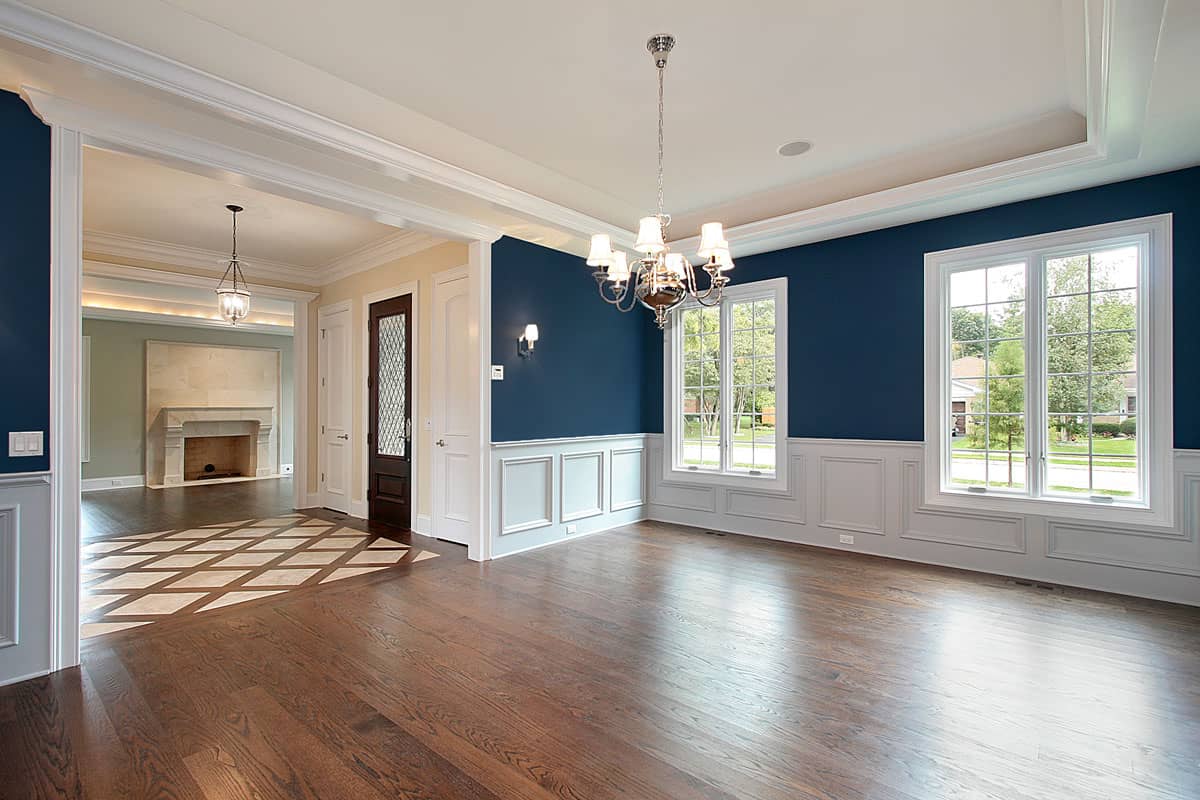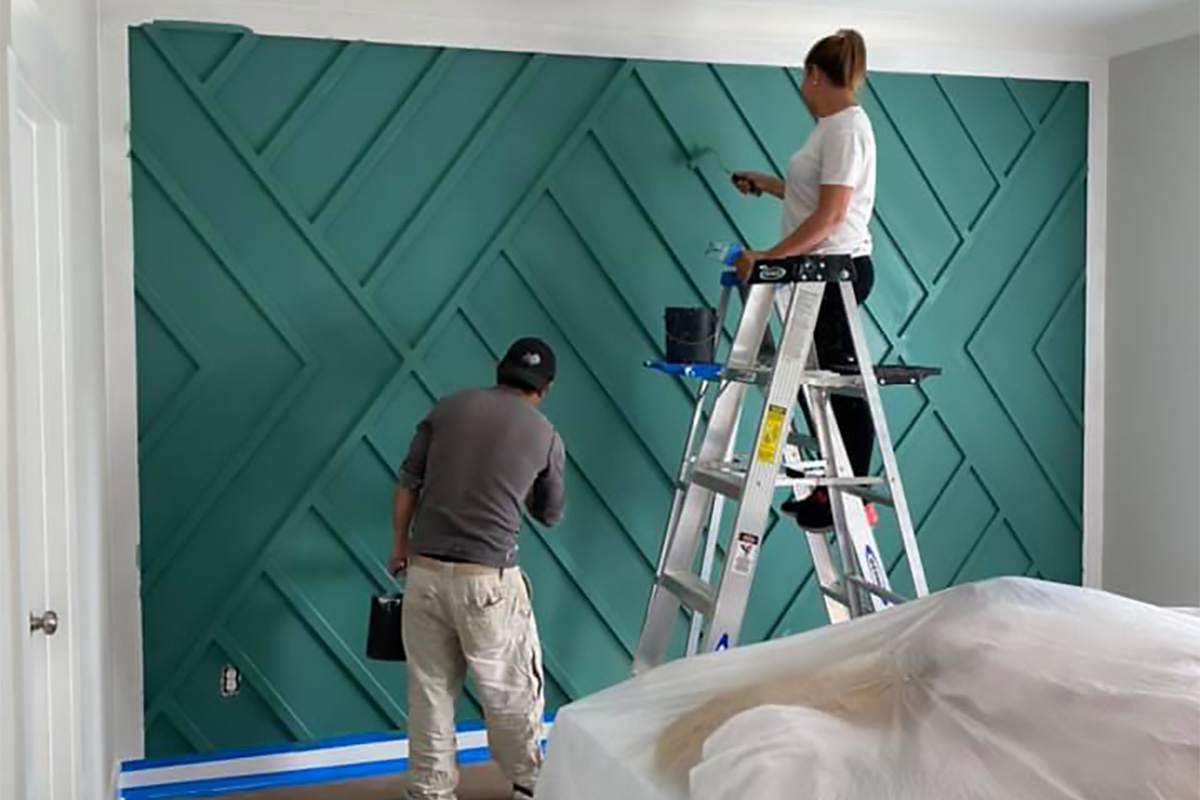Professional Lakewood Interior Painting Services for a Fresh Home Makeover
Professional Lakewood Interior Painting Services for a Fresh Home Makeover
Blog Article
Enhance Your Interior Decoration With Comprehensive Color Assessment
The integration of color appointment into interior style offers an one-of-a-kind possibility to refine and boost the psychological and visual resonance of a space. By engaging with an experienced color specialist, you can navigate the intricacies of shade choice, making sure that your selections not just complement architectural functions however likewise resonate with personal design and mental impact.
Advantages of Color Assessment

Furthermore, color assessment aids in making the most of natural light and optimizing spatial understanding. Lighter hues can make a room show up even more expansive, while darker tones produce an intimate setup. Cleveland Metro Painting Specialists. This strategic application of color can significantly affect the overall atmosphere of any kind of indoor space
In addition, specialist consultants have an extensive understanding of classic standards and existing fads, ensuring that the picked shades will certainly remain appealing gradually. This insight can conserve customers from costly redesigns in the future. Color examination equips clients by supplying them with a clear vision and instructions, cultivating confidence in their style selections and inevitably leading to a much more effective and rewarding interior style end result.
Understanding Shade Psychology
The importance of color psychology in interior design can not be overstated, as it digs into the psychological and emotional results that numerous colors can evoke in individuals. Shades can affect mood, habits, and also efficiency, making them a critical factor to consider in any type of design task.
For instance, warm colors such as red, orange, and yellow are often associated with power and heat. They can stimulate sensations of excitement and comfort, making them suitable for social spaces like living kitchen areas or rooms. Conversely, amazing shades like blue, environment-friendly, and purple tend to stimulate calmness and tranquility, making them perfect for bed rooms or meditation locations.
In addition, the usage of neutral tones can create a balanced atmosphere by enabling the bolder colors to attract attention without frustrating the senses. Comprehending these emotional impacts enables designers to create areas that not only look visually pleasing but additionally promote psychological well-being.
Incorporating color psychology right into indoor style entails a thoughtful choice of hues tailored to the designated feature of each room, eventually boosting the total experience for its occupants. This awareness is crucial for achieving a useful and harmonious interior setting.
The Shade Wheel Clarified
Understanding the relationships between colors is essential for reliable interior decoration, and the shade wheel acts as a valuable tool in this process. The shade wheel, developed by Isaac Newton in the 17th century, shows the range of colors arranged in a round style. It consists of main shades-- red, blue, and yellow-- that can not be developed by mixing other shades. Additional colors, created by combining primaries, include green, orange, and purple. Tertiary colors arise from blending a primary and a secondary color, leading to tones such as blue-green and red-orange.
The shade wheel aids developers understand the connections between colors, including complementary, comparable, and triadic systems. Complementary shades, positioned contrary each visit this website various other on the wheel, develop vibrant contrasts that can energize a room. Analogous colors, located beside each other, offer a natural and harmonious appearance. Triadic plans utilize 3 uniformly spaced shades, providing balance and aesthetic passion.
Making use of the shade wheel in interior decoration not only improves aesthetic charm yet also evokes particular feelings and environments, making it an essential reference for color consultation. Comprehending these connections ultimately empowers designers to develop rooms that are both functional and aesthetically fascinating.
Selecting the Right Palette
An appropriate color system can link a room, enhance its features, and stimulate preferred emotions. Different spaces offer diverse functions and need combinations that reflect their desired usage; for instance, peaceful shades such as soft blues or greens work well in bed rooms, advertising leisure.
Following, think about the natural light available. Light can considerably modify how shades show up, so it is vital to examine the area at various times of the day. Furthermore, consider existing architectural components and home furnishings. An unified scheme must complement these functions, creating a natural appearance throughout the space.
When picking colors, utilize the 60-30-10 policy, which suggests that 60% of the area need to be a leading shade, 30% a secondary shade, and 10% an accent color. This ratio guarantees balance and visual interest (Cleveland Metro Painting Specialists). Finally, example shades on the walls prior to dedicating, as this allows you to see how the hues communicate with each other and the total atmosphere they create in your interior style task.
Functioning With a Color Professional

When collaborating with a color expert, the process generally begins with a first examination. During this conference, you'll discuss your vision, choices, and the existing aspects in your area. The specialist will certainly examine your demands and may suggest specific shade combinations that straighten with your goals.
After developing an instructions, the consultant will supply samples and aesthetic help to help you envision the suggested color design. This action is essential, as colors can appear differently under varying lights conditions.
Additionally, a shade specialist can direct you in selecting complementary furnishings, artwork, and accessories to integrate with your selected palette. By teaming up closely, you can achieve a polished next aesthetic that elevates your interiors and creates an inviting environment. Inevitably, the knowledge of a color professional can considerably boost the general effect of your style task.
Verdict
In recap, comprehensive color assessment works as a crucial tool for boosting interior decoration. By leveraging specialist expertise of shade psychology and spatial characteristics, a customized shade scheme can be developed to stimulate certain feelings and develop an address unified setting. This strategic approach not only cultivates a cohesive design story yet also mitigates the danger of pricey redesigns. Ultimately, involving with a color expert guarantees an informed and cosmetically pleasing result, raising the total experience of the room.
By engaging with an experienced color professional, you can navigate the intricacies of shade option, making sure that your selections not just complement architectural attributes yet also resonate with individual design and emotional effect. It consists of primary colors-- red, blue, and yellow-- that can not be produced by mixing various other colors.The shade wheel helps developers understand the relationships between shades, including corresponding, similar, and triadic plans.When picking shades, use the 60-30-10 policy, which recommends that 60% of the space should be a leading color, 30% a secondary shade, and 10% an accent color. By leveraging expert expertise of color psychology and spatial dynamics, a customized shade scheme can be established to evoke certain feelings and develop a harmonious setting.
Report this page